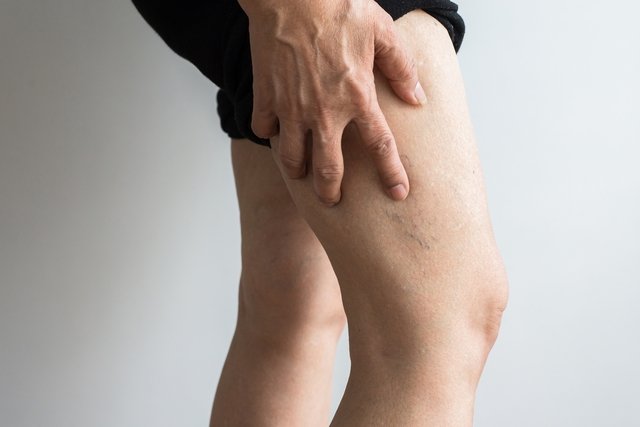Dense foam sclerotherapy is a type of treatment that completely eliminates varicose veins and small spider veins. The technique consists of applying a sclerosing substance called Polidocanol, in foam form, directly to the varicose veins, until they disappear.
Foam sclerotherapy is effective in microvaricose veins and varicose veins up to 2 mm, eliminating them completely. In larger varicose veins, this treatment may not give the best result, but it is capable of reducing their size, requiring more than 1 application on the same varicose vein.
It is important that this procedure is carried out after a vascular surgeon’s recommendation to avoid the occurrence of complications.

How it is made
This treatment is relatively simple and carried out in the doctor’s office without the need for hospitalization or anesthesia. Despite being a simple procedure without many complications, it is important that foam sclerotherapy is carried out by a specialist doctor, preferably an angiologist.
To perform the procedure, the doctor locates the vein using ultrasound and then injects the foam-shaped substance directly into the vein, which causes it to close and the blood to be redirected, improving blood circulation and combating varicose veins and small spider veins. During the injection, the person may feel some pain and discomfort, but it is usually well tolerated and disappears after the injection.
Is this treatment permanent?
The elimination of varicose veins and small spider veins with foam sclerotherapy is practically definitive because the treated vessel will not have varicose veins again, however, other varicose veins may appear because this also has a hereditary characteristic.
Care after foam sclerotherapy
After the foam sclerotherapy session, it is recommended that the person wear elastic compression stockings, such as Kendall, to improve venous return and reduce the chances of new varicose veins appearing. It is also recommended that the person does not expose themselves to the sun to prevent the area from becoming stained. If it is really necessary, a sunscreen should be used over the entire treated area.
Risks of foam sclerotherapy
Foam sclerotherapy is a safe procedure and has low risks, and it is only possible to notice small local changes related to the application of the foam, such as burning, swelling or redness in the region, which disappear within a few hours, for example.
Although it poses no risks, in some rare cases sclerotherapy can result in some consequences, such as deep vein thrombosis and embolism, which can cause clots to move through the body and reach the lungs, for example. In addition, there may be a severe allergic reaction, the formation of difficult-to-heal wounds or hyperpigmentation in the region.
Therefore, it is important that the vascular surgeon is consulted before carrying out sclerotherapy so that the risks of carrying out this procedure can be assessed.

Sign up for our newsletter and stay up to date with exclusive news
that can transform your routine!
Warning: Undefined array key "title" in /home/storelat/public_html/wp-content/plugins/link-whisper-premium/templates/frontend/related-posts.php on line 12
Warning: Undefined array key "title_tag" in /home/storelat/public_html/wp-content/plugins/link-whisper-premium/templates/frontend/related-posts.php on line 13



